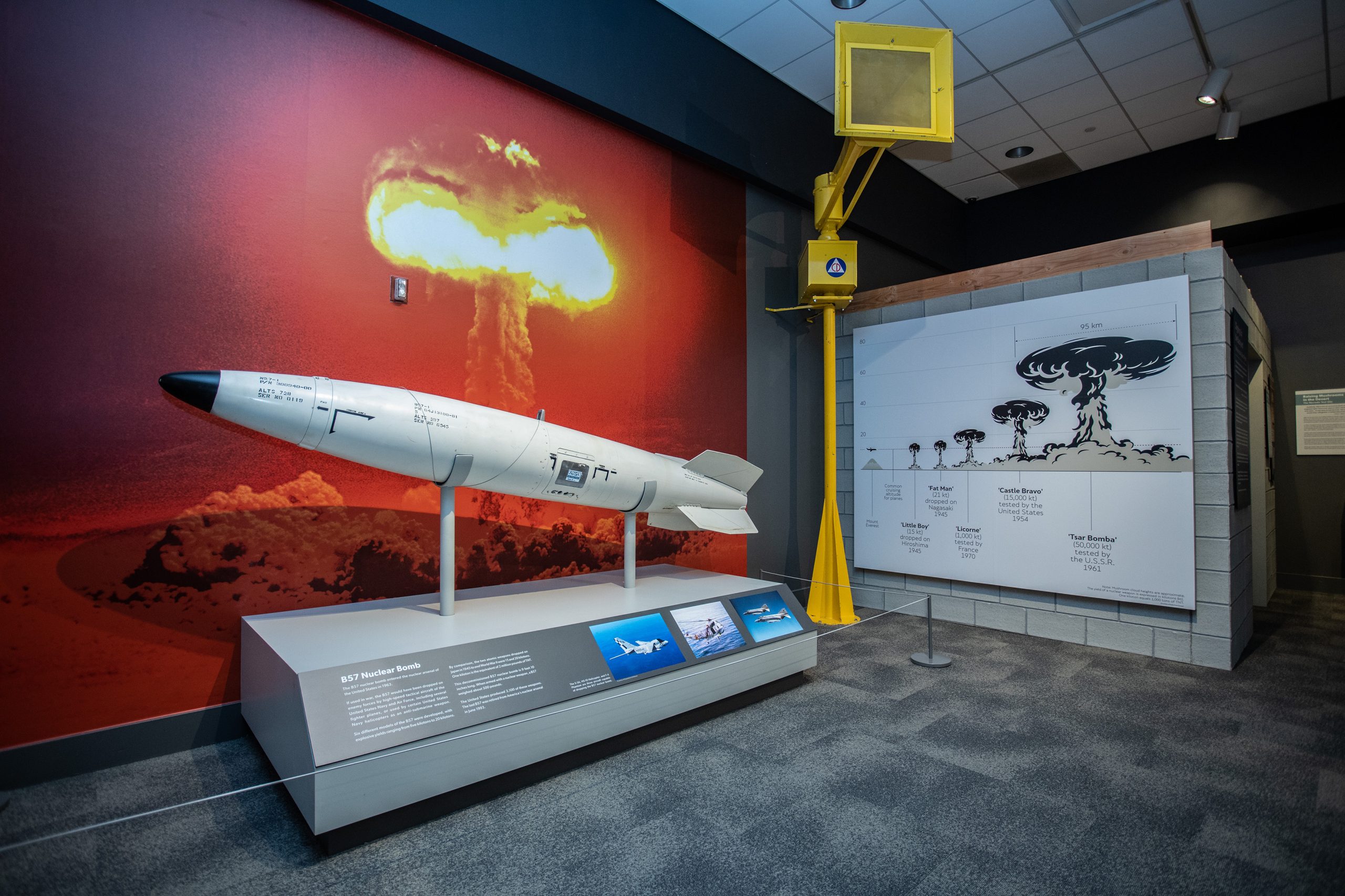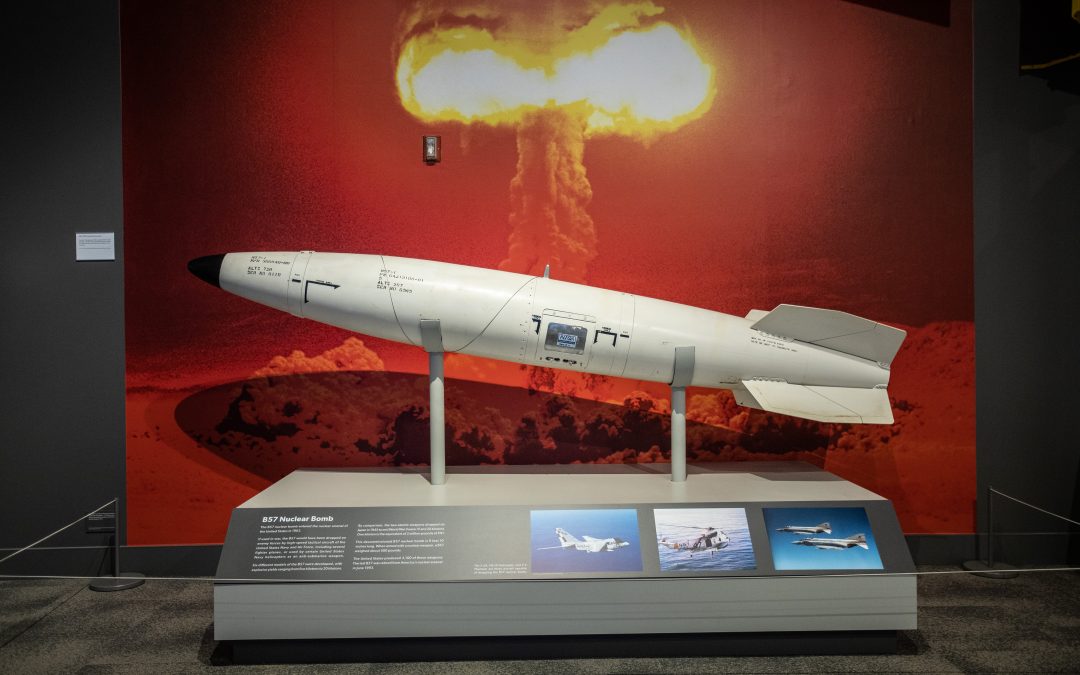Living under the threat of impending nuclear war was one of the defining aspects of the Cold War. Nothing makes that point so real as getting to (safely) view an authentic nuclear bomb. While the weapon is almost ten feet long and would weigh about 500 pounds when armed, the size pales in comparison to the amount of destruction it could cause. Just one bomb was enough to destroy an entire city.
The bomb on display in the special exhibit Cold War: Soviets, Spies and Secrets is a MK-57 BU Atomic Weapon on loan from the National Museum of Nuclear Science and History. It is an example of the B57 nuclear bomb that entered the nuclear arsenal of the United States in 1963.
If used in war, the B57 would have been dropped on the enemy forces by high-speed tactical aircraft of the United States Navy and Air Force, including several fighter planes, or used by certain United States Navy helicopters as an anti-submarine weapon.
Six different models of the B57 were developed, with explosive yields ranging from five kilotons to 20 kilotons. By comparison, the two atomic weapons dropped on Japan in 1945 to end World War II were 15 and 20 kilotons. One kiloton is the equivalent of 2 million pounds of TNT.
This decommissioned B57 nuclear bomb is 9 feet 10 inches long. When armed with a nuclear weapon, a B57 weighed about 500 pounds.
The United States produced 3,100 of these weapons. The last B57 was retired from America’s nuclear arsenal in June 1993.
In the exhibit, a bright yellow Civil Defense air raid siren looms over the nuclear weapon as a reminder that threat of nuclear war was part of everyday life for decades after World War II. Cities and towns across America had an air raid warning system as part of preparedness that included duck and cover drills and bomb shelters. The Thunderbolt Siren on display is on loan from the Ronald Reagan Presidential Library and Museum.

Placing the Artifact in Context: The Dawn of the Nuclear Age
We are in the era of the thermonuclear bomb that can obliterate cities and can be delivered across continents. With such weapons, war has become, not just tragic, but preposterous.
President Dwight D. Eisenhower, August 23, 1956
By the end of 1949, both the United States and the Soviet Union possessed nuclear weapons. Deeply suspicious of each other, each country launched an intensive effort to develop increasing numbers of nuclear bombs of increasing strength.
According to the Council on Foreign Relations, “During the Cold War, the United States and the Soviet Union together amassed some sixty thousand weapons. [E]ach country possessed enough nuclear weapons to destroy the other several times over.”
This enormous stockpile of weapons guaranteed that if one nation launched a nuclear attack, the other would respond in kind. This would lead to the complete destruction, not just each other, but of the entire planet. Called Mutually Assured Destruction (MAD), this posture actually helped avoid nuclear war throughout the Cold War.
The Cold War: Soviets, Spies and Secrets is included with admission to the Nixon Library. The Nixon Library is open seven days a week from 10 AM to 5 PM.
Nixon Library admission is $25 for adults, $21 for seniors, $19 for high school and college students, $19 for retired military, active military are free, children 5-11 for $15 and children 4 and under are free.
Nixon Foundation Members enjoy complimentary admission to the exhibit as part of their membership benefits.

